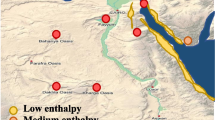Abstract
Shallow rock and soil have a heat transfer temperature difference with the external environment, which can affect the external temperature through natural ventilation. In order to study and research the ventilation and energy saving of underground buildings based on this point, this study uses natural ventilation, field measurement, and DeST numerical simulation method to test the actual natural supply air rate of Zhengzhou metro station and the temperature, humidity, and CO2 concentration in the station. After further simulation analysis, the energy-saving design method and operation mode that make full use of natural ventilation are proposed in the end, and the energy-saving advantages that natural ventilation can bring are further explored. The results show that during the ventilation season, increasing the natural ventilation in March, April, and November can improve the thermal environment in the station and reduce the opening time of draught fan, saving the energy consumption of the fan operation, while in the months when the outdoor temperature is lower, such as in January, February, and in December, maintaining the existing natural ventilation is able to meet the station temperature requirements. It can be seen that the design of this study is reasonable and has achieved the expected effect. It can use the effect of natural ventilation on the metro station to achieve energy saving.





Similar content being viewed by others
References
Besler M, Skrzycki M, Cepiński W (2017) Energy saving by using natural energy from the shallow ground depths - many years operating results[J]. E3S Web of Conferences 22:00016
Hausmann U Jr, M G, Marshall J (2017) Observed mesoscale eddy signatures in Southern Ocean surface mixed-layer depth[J]. J Geophys Res Oceans 122(1):617–635
Lambert K, Welch S, Merci B (2018) The use of positive pressure ventilation fans during firefighting operations in underground stations: an experimental study[J]. Fire Technol 54(3):625–647
Li A, Gao X, Tong R (2017) Study on thermal pressure in a sloping underground tunnel under natural ventilation[J]. Energy Buildings 147:200–209
Liu L, Zhe L, Liu X et al (2018) Frost front research of a cold-region tunnel considering ventilation based on a physical model test[J]. Tunn Undergr Space Technol 77:261–279
Yang T, Jiang S, Yang J et al (2017) Experiment on heating system combined shallow geothermal energy with solar wall in winter[J]. Trans Chin Soc Agric Eng 33(20):183–189
Yu LX, Liu F, Liu YQ et al (2017) Experimental study on thermal and smoke control using transverse ventilation in a sloping urban traffic link tunnel fire[J]. Tunnell Undergr Space Technol 71:81–93
Author information
Authors and Affiliations
Corresponding author
Additional information
This article is part of the Topical Collection on Geological Modeling and Geospatial Data Analysis
Rights and permissions
About this article
Cite this article
Zhang, J. Experimental study on ventilation and energy saving of underground buildings based on shallow ground temperature. Arab J Geosci 12, 673 (2019). https://doi.org/10.1007/s12517-019-4843-9
Received:
Accepted:
Published:
DOI: https://doi.org/10.1007/s12517-019-4843-9



